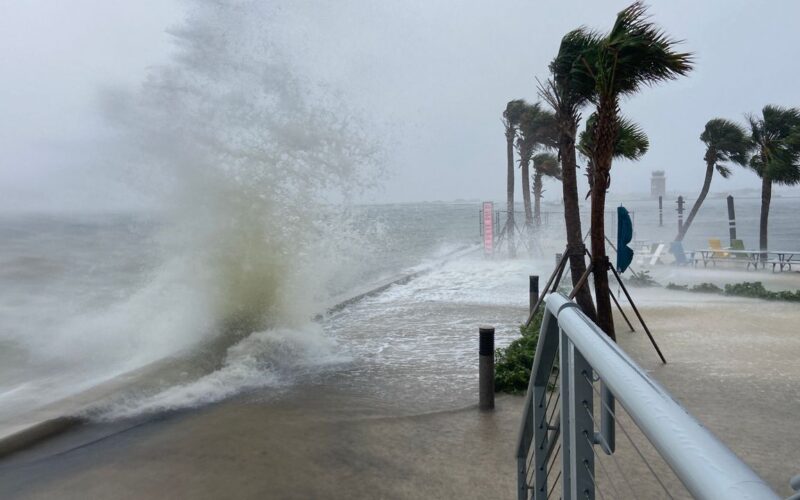Tropical Storm, often referred to as hurricanes or typhoons depending on the region, are meteorological phenomena characterized by intense low-pressure systems and strong winds. These natural events, fueled by warm ocean waters, can have devastating effects on coastal areas and islands. This article explores the science behind tropical storms, their formation, impacts, and the measures taken to mitigate their potentially catastrophic consequences.
Understanding Tropical Storms
-
Definition and Formation
Tropical storms are powerful atmospheric disturbances that originate over warm ocean waters near the equator. They typically form when sea surface temperatures reach at least 26.5 degrees Celsius (80 degrees Fahrenheit). Warm air rises from the ocean’s surface, creating a low-pressure system that draws in more air, leading to the formation of a storm.
-
Life Cycle of a Tropical Storm
a. Tropical Depression
The initial stage is a tropical depression, characterized by organized but relatively weak winds.
b. Tropical Storm
As wind speeds intensify, the system becomes a tropical storm with a defined center and sustained winds ranging from 39 to 73 miles per hour.
c. Hurricane or Typhoon
If wind speeds exceed 74 miles per hour, the storm is classified as a hurricane (Atlantic and eastern Pacific) or a typhoon (northwestern Pacific). These intense storms are categorized on the Saffir-Simpson Hurricane Wind Scale.
The Science Behind Tropical Storm Intensity
-
Warm Ocean Waters as Fuel
The primary fuel for tropical storms is warm ocean water. As the sea surface heats up, it evaporates, transferring heat and moisture into the atmosphere. This process provides the energy needed for the storm to intensify.
-
Coriolis Effect and Rotation
a. Coriolis Effect
The Coriolis effect, caused by the Earth’s rotation, influences the direction of the storm’s rotation. In the Northern Hemisphere, tropical storms rotate counterclockwise, while in the Southern Hemisphere, they rotate clockwise.
b. Eye and Eyewall
The eye, a central feature of a mature tropical storm, is a region of low pressure and calm winds. Surrounding the eye is the eyewall, where the strongest winds and heaviest rainfall occur.
Impacts of Tropical Storms
-
Wind Damage
a. Destruction of Structures
High winds associated with tropical storms can cause extensive damage to buildings, infrastructure, and vegetation. The severity of wind damage is often a key factor in assessing the impact of a storm.
-
Storm Surge
a. Coastal Inundation
One of the most dangerous aspects of tropical storms is the storm surge, a rapid rise in sea level caused by strong winds pushing water towards the shore. Storm surges can lead to coastal inundation, flooding low-lying areas and posing a severe threat to communities.
-
Heavy Rainfall and Flooding
a. Torrential Rainfall
Tropical storms are often accompanied by heavy rainfall, leading to flooding in both coastal and inland areas. This can result in flash floods, river floods, and mudslides, causing extensive damage to communities and ecosystems.
-
Tornadoes
a. Tornado Formation
Tropical storms can spawn tornadoes, adding another layer of danger to their impact. These tornadoes can cause localized destruction within the storm’s broader path.
Forecasting and Preparedness
-
Meteorological Technology
a. Satellite Monitoring
Advances in satellite technology have significantly improved the ability to monitor and track tropical storms from their early stages. This provides crucial information for forecasting their potential paths and intensities.
b. Computer Models
Numerical weather prediction models play a key role in forecasting tropical storms. These models use complex algorithms to simulate atmospheric conditions, helping meteorologists predict the storm’s trajectory and intensity.
-
Evacuation and Shelter Plans
a. Early Warnings
Governments and meteorological agencies issue early warnings to coastal communities, urging residents to evacuate to safer locations. Establishing and communicating evacuation plans is essential for minimizing the loss of life during a tropical storm.
b. Emergency Shelters
Designated emergency shelters provide refuge for those unable to evacuate. These shelters are equipped with necessary supplies and facilities to accommodate displaced individuals and families.
Climate Change and Tropical Storms
-
Warming Seas and Intensification
a. Impact of Climate Change
The warming of Earth’s oceans due to climate change contributes to the increased intensity of tropical storms. Warmer waters provide more energy for storm development and can result in more powerful hurricanes or typhoons.
b. Rising Sea Levels
Climate change also contributes to rising sea levels, exacerbating the impact of storm surges. Coastal regions are more vulnerable to inundation as sea levels continue to rise.
Recovery and Reconstruction
-
Post-Storm Recovery Efforts
a. Emergency Response
Immediately following a tropical storm, emergency response teams provide essential services, including search and rescue operations, medical assistance, and the distribution of food and supplies.
b. Infrastructure Rehabilitation
Reconstruction efforts focus on repairing and rebuilding damaged infrastructure, restoring essential services, and facilitating the return of displaced communities to normalcy.
Global Cooperation in Mitigating Tropical Storm Impacts
-
International Collaboration
a. Sharing Resources and Expertise
Given the transboundary nature of tropical storms, international collaboration is crucial. Countries often share resources, expertise, and technological advancements to enhance global preparedness and response efforts.
b. Climate Agreements
International agreements and initiatives aimed at mitigating climate change play a vital role in addressing the underlying factors that contribute to the increasing frequency and intensity of tropical storms.
Conclusion
Tropical storms, while awe-inspiring in their meteorological complexity, pose significant challenges to communities in their path. Understanding the science behind these natural phenomena, coupled with advancements in forecasting and preparedness, is essential for mitigating their impact. As the global community grapples with the effects of climate change, addressing the intensification of tropical storms requires a coordinated effort to adapt to the evolving nature of these powerful and unpredictable forces of nature.




